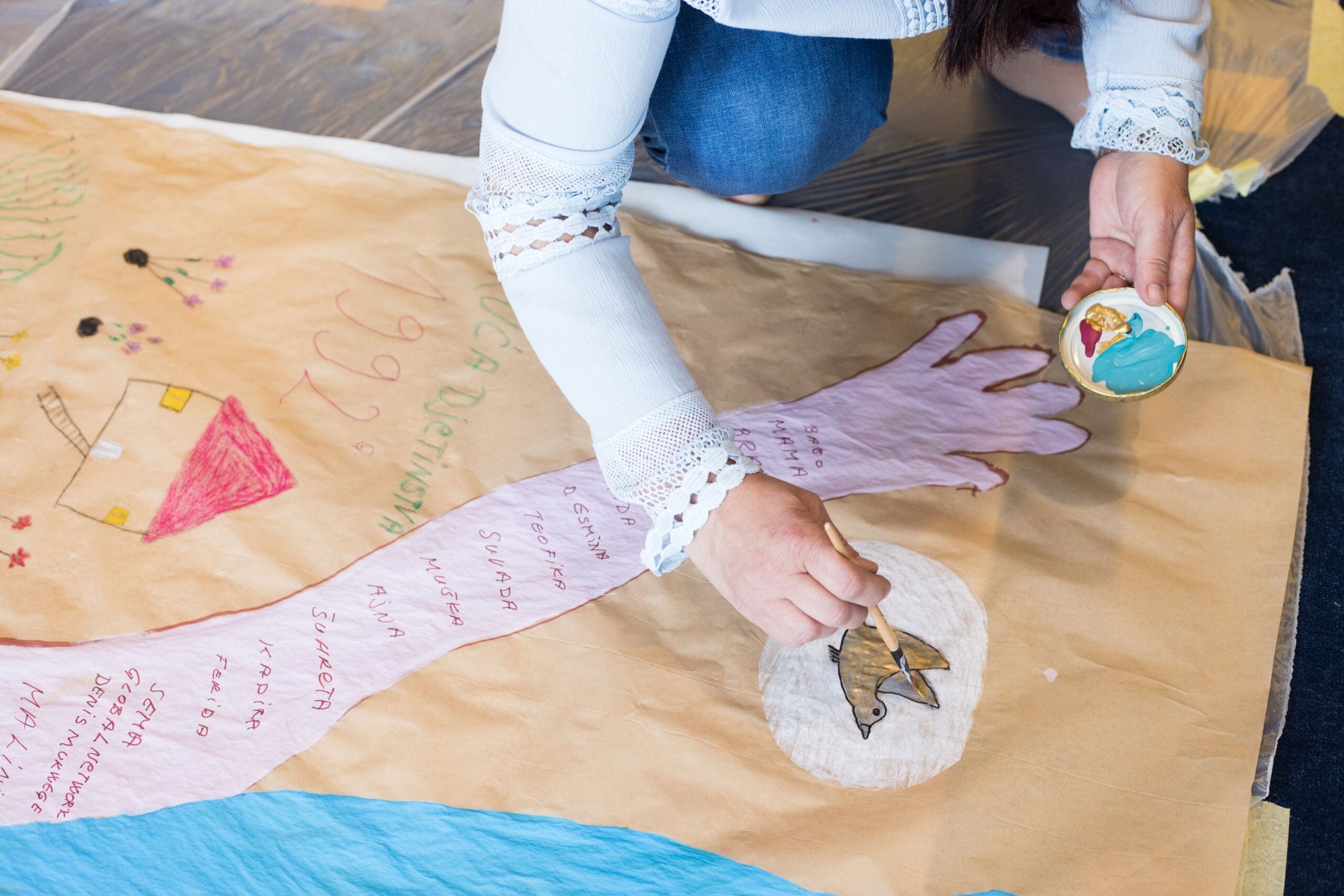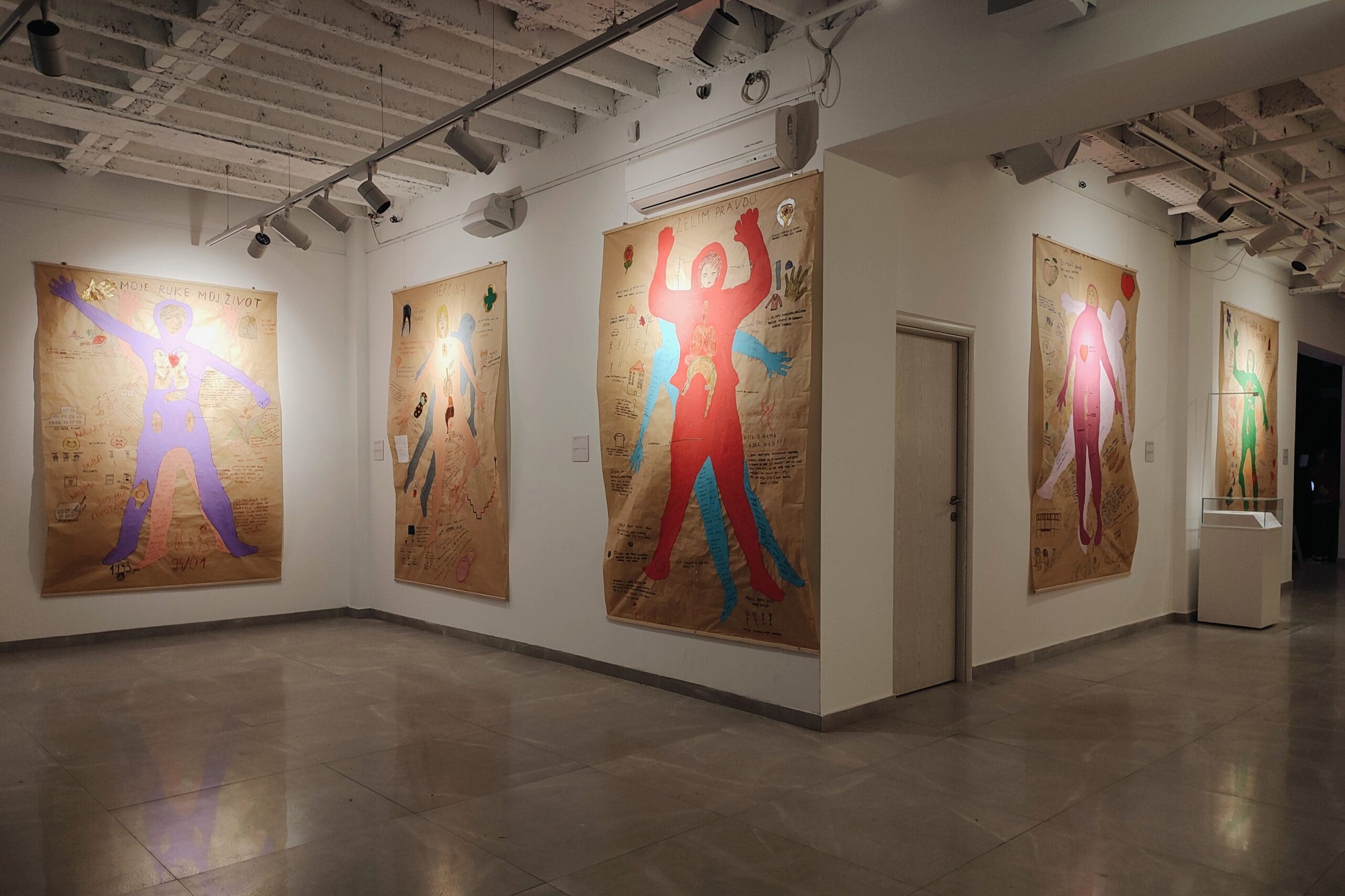Western Balkans, Storytelling, Visual Arts, Raising Awareness, Trauma Healing

The "Speaking Out" exhibition explores the experiences of survivors of wartime sexual violence and children born as a result of wartime rape in Bosnia and Herzegovina. In addition to personal belongings and video testimonies; the exhibition showcased personal stories of survivors who took part in body-mapping workshops, enabling them to express their experiences through a form of art therapy.
The result of the workshops were life-sized representations of survivors, surrounded and inscribed with their experiences from different periods of life. The aim of the exhibition was to break the silence and stigma surrounding this sensitive topic, and to highlight the manifold issues survivors face in everyday life and what they hope for in the future.
Nearly three decades post the 1992-95 war, survivors of conflict-related sexual violence (CRSV) still endure profound consequences in their daily lives. The inadequate response of public institutions in Bosnia and Herzegovina amplifies these challenges. Over 20,000 individuals, mainly women and girls, suffered sexual violence, but the actual number is likely higher due to underreporting, trauma, and stigma. Most survivors still await justice and reparations, grappling with the enduring physical and psychological aftermath, while at the same time they are in need of accessible and affordable services such as free legal advice, healthcare and economic empowerment.

Personal stories of wartime sexual violence survivors expressed through visual maps
Art therapy as integral part of participatory exhibition production for survivors of sexual violence, but also for community as a whole


Exhibition succeeded in raising awareness about the experiences of war-affected children, effectively shedding light on their stories and the immense challenges they endure during conflicts. This heightened awareness has contributed to a deeper understanding of the human toll of war.

It has provided a healing and empowering space for survivors of wartime sexual violence and children born of war. It has helped create supportive communities by bringing people together to share their stories, fostering a sense of belonging and solidarity.

Exhibition toured in BiH and Serbia, and it made an impact as an advocacy tool for children born of war seeking legal recognition in BiH, and as an example of good practice for aiding Ukrainian conflict-related sexual violence survivors in Moldova.

The most important impact was the method itself that gave the workshop participants a sense of agency and a tool to be able to look back on their lives in their entirety. It simply allowed many of them to face the trauma, but also go beyond it, remembering some happy childhood memories, and also focusing a bit more clearly on what their hopes are for the future, what their needs are for the future.
